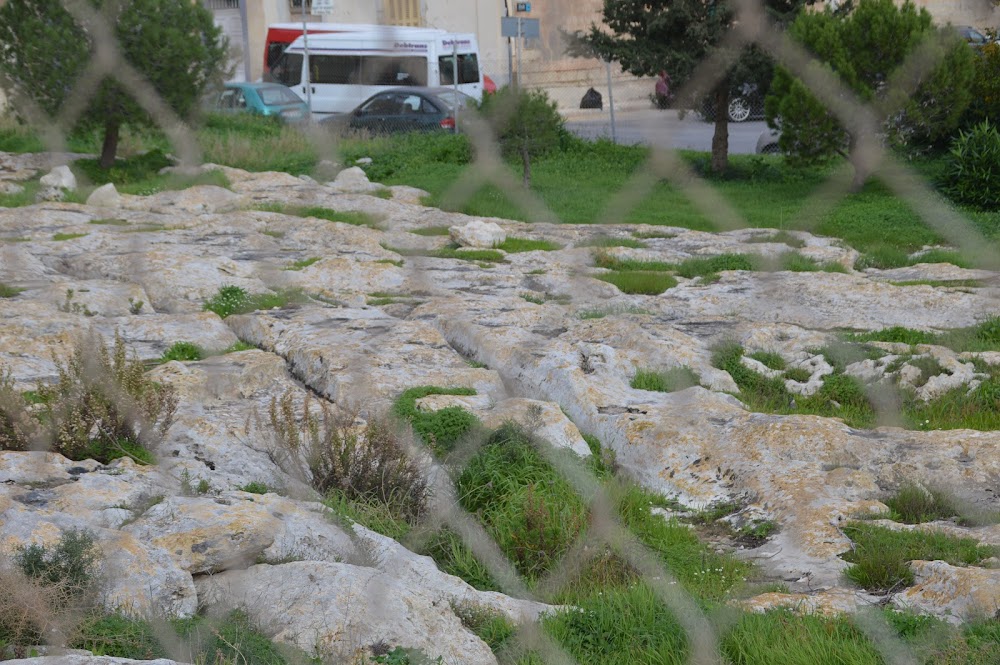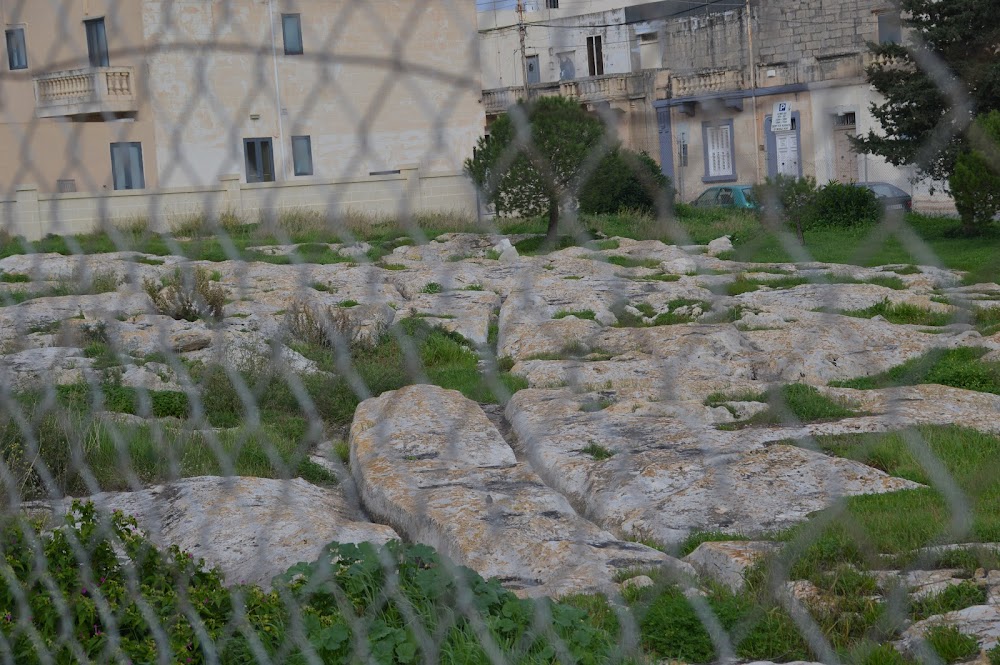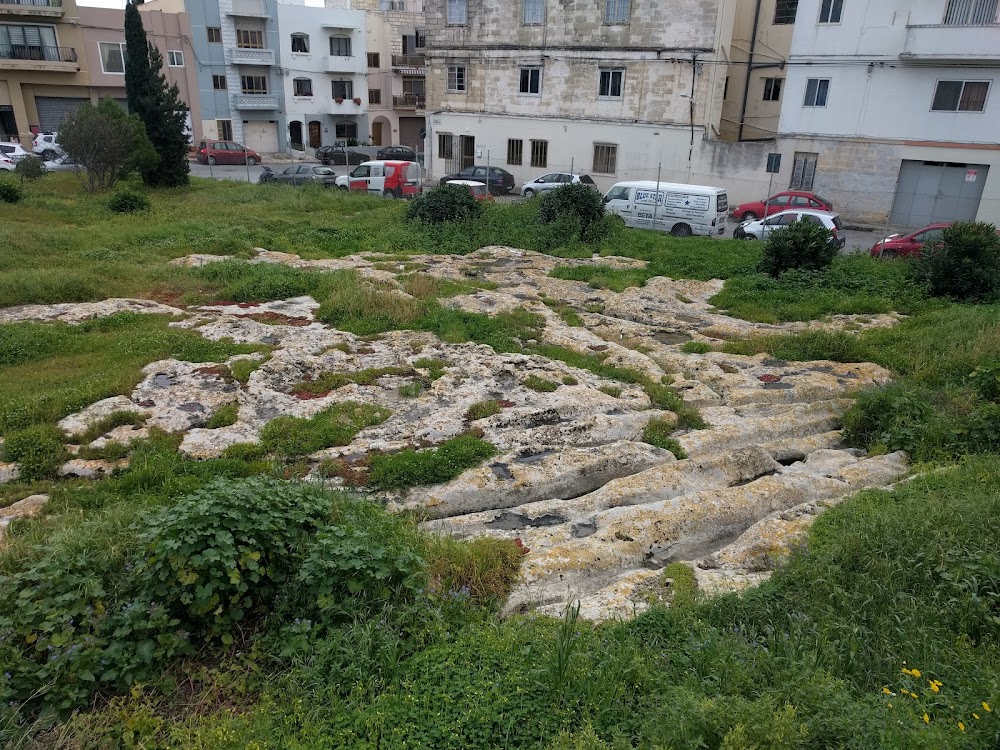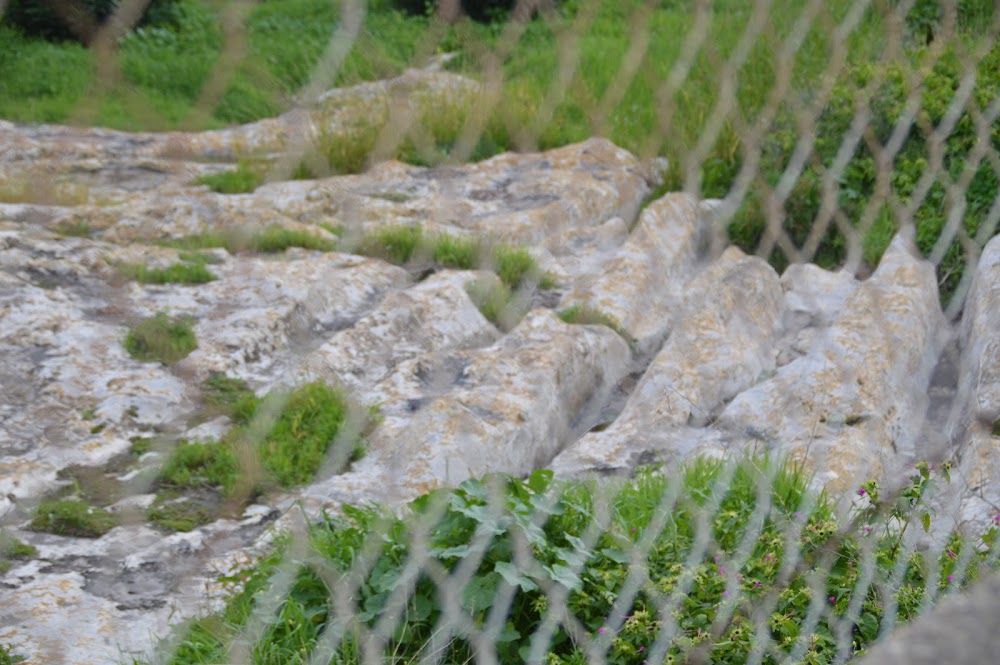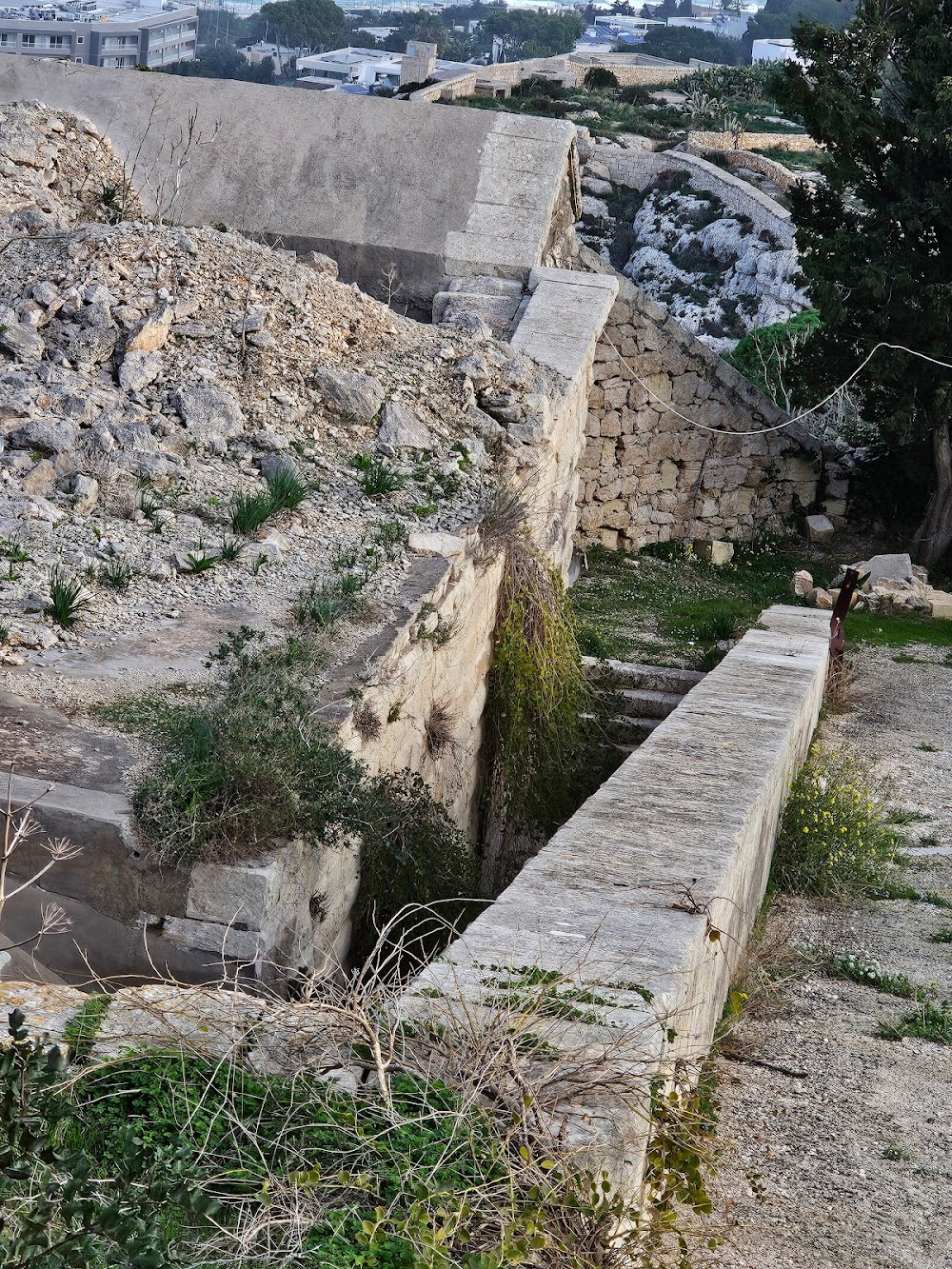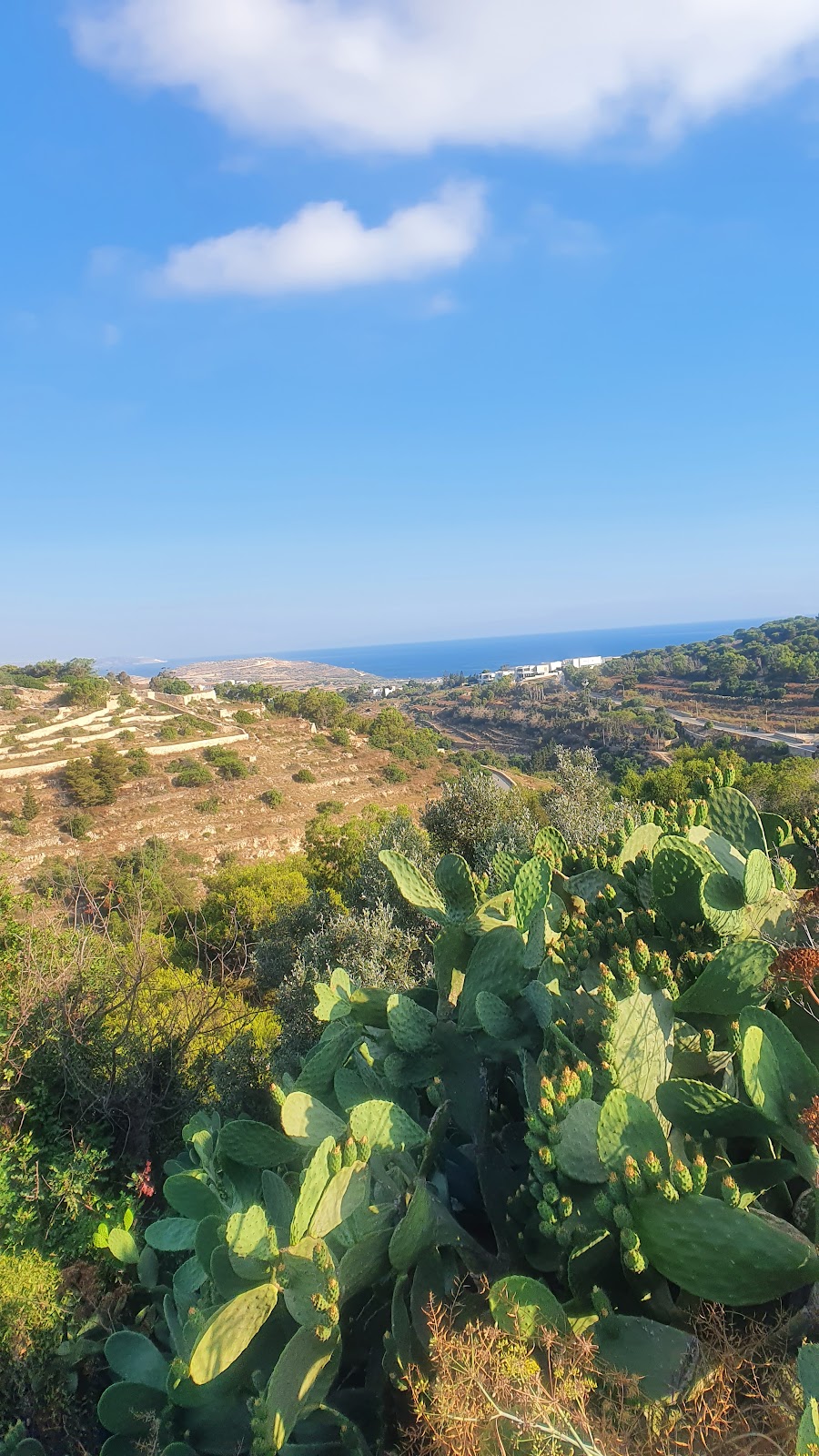Għargħur Cart Ruts (Il-Karrejja tal-Għargħur)
Related Places
Overview
The Għargħur Cart Ruts are a fascinating and enigmatic feature located in the city of Għargħur, near the coast of Mauritania. These ancient parallel grooves, carved into the rock surfaces, have intrigued historians and archaeologists for over a century. The precise purpose and method behind their creation continue to spark debate and curiosity among experts in the field.
Believed to be thousands of years old, the cart ruts run in pairs, maintaining a consistent distance of approximately 1.4 meters apart. These grooves cut through the rocky landscape, sometimes extending for significant distances before disappearing or merging with other ruts. Their uniformity and persistence raise questions about the techniques and tools used to create them.
Numerous theories have emerged regarding the origins of the cart ruts. The most widely accepted explanation is that they were formed by heavy wooden carts or sledges laden with goods. Over time, the wheels or runners of these carts wore down the rock surface, etching the ruts into the terrain. This gradual process likely resulted from consistent use along the same paths.
Another intriguing theory posits that the ruts were deliberately carved into the rock to facilitate the transportation of large stone blocks for construction purposes. The uniform depth and width of these tracks may have served to guide and stabilize the movement of these hefty materials, showcasing the engineering skills of ancient societies.
Some researchers suggest that the cart ruts were not merely a product of erosion but were intentionally designed with precision. This idea is supported by the regularity and consistency of the tracks, which may exceed what could be achieved through natural wear alone. Such craftsmanship hints at a sophisticated understanding of materials and transport among the ancient peoples of the region.
The origin and purpose of the Għargħur Cart Ruts are intricately linked to Mauritania's rich ancient history. Situated near former trade routes and settlements, the tracks likely served commercial or logistical purposes, aiding in the movement of goods across the region. Alternatively, they may have been part of a larger transportation network dedicated to supporting significant construction projects, perhaps even religious or ceremonial structures.
Despite extensive research, the exact timeline of the creation of the cart ruts remains elusive. Radiocarbon dating of nearby artifacts suggests that they were actively used around 2000 to 3000 years ago, providing a glimpse into the daily lives of those who once navigated these ancient paths.
Today, modern geologists and archaeologists continue to investigate the Għargħur Cart Ruts, employing advanced techniques such as 3D mapping and detailed geological analysis. These innovative methods aim to uncover more about the materials and tools utilized in their creation and to better understand their role within ancient Mauritanian society.
Now recognized as a valuable cultural and historical site, the cart ruts of Għargħur attract interest from tourists and scholars alike. They stand as a tangible link to the ingenuity and daily lives of ancient peoples, offering insights into their interactions with the landscape and each other.
In conclusion, while the exact purpose of the Għargħur Cart Ruts may remain a mystery, they serve as a testament to human innovation and adaptation, etched into the enduring rock of Mauritania's landscape. Exploring this remarkable site allows visitors to connect with the past and appreciate the legacy of those who walked these paths long ago.


